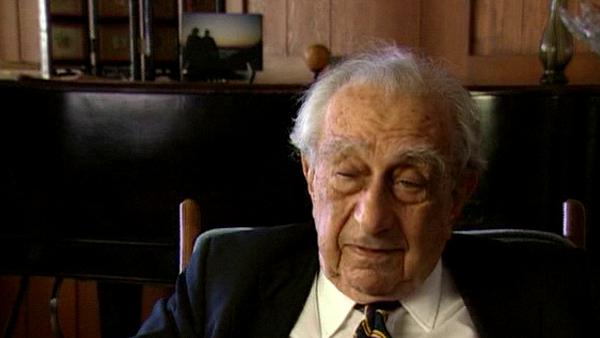NEXT STORY

The changing polarizability of carbon dioxide
RELATED STORIES

NEXT STORY

The changing polarizability of carbon dioxide
RELATED STORIES


|
Views | Duration | |
|---|---|---|---|
| 31. Going to see Einstein give a lecture | 3 | 1246 | 03:29 |
| 32. Drinking tea with Niels Bohr | 795 | 05:42 | |
| 33. The importance of understanding a statement and its opposite | 518 | 02:47 | |
| 34. Heisenberg, Bohr and the atomic bomb | 1 | 975 | 06:03 |
| 35. Becoming an assistant of Eucken and Franck | 378 | 06:05 | |
| 36. The Correspondence Principle | 367 | 05:13 | |
| 37. The Raman Effect | 425 | 03:12 | |
| 38. Cabannes and Rocard: Explication of the Raman Effect | 347 | 04:21 | |
| 39. The changing polarizability of carbon dioxide | 432 | 04:49 | |
| 40. Going to Rome with Placzek to visit Fermi | 471 | 02:53 |


The late Hungarian-American physicist Edward Teller helped to develop the atomic bomb and provided the theoretical framework for the hydrogen bomb. During his long and sometimes controversial career he was a staunch advocate of nuclear power and also of a strong defence policy, calling for the development of advanced thermonuclear weapons.
Title: Cabannes and Rocard: Explication of the Raman Effect
Listeners: John H. Nuckolls
John H. Nuckolls was Director of the Lawrence Livermore National Laboratory from 1988 to 1994. He joined the Laboratory in 1955, 3 years after its establishment, with a masters degree in physics from Columbia. He rose to become the Laboratory's Associate Director for Physics before his appointment as Director in 1988.
Nuckolls, a laser fusion and nuclear weapons physicist, helped pioneer the use of computers to understand and simulate physics phenomena at extremes of temperature, density and short time scales. He is internationally recognised for his work in the development and control of nuclear explosions and as a pioneer in the development of laser fusion.
Duration: 4 minutes, 22 seconds
Date story recorded: June 1996
Date story went live: 24 January 2008